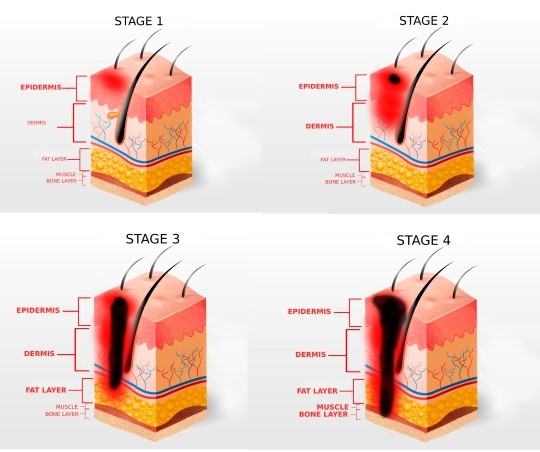How to Prevent Bed Sores in Bedridden Patients- Methods & Care Product
Caring for a bedridden loved one can be challenging, especially when they develop bedsores due to prolonged immobility. While cleaning and medication can help manage symptoms, addressing the root cause is essential for prevention.
Why Do Bedsores Occur?
Bedsores, also known as pressure ulcers or decubitus ulcers, develop when continuous pressure on the skin reduces blood circulation, causing tissue damage. Since humans are meant to move, lying in one position for too long leads to swelling and irritation in pressure-prone areas, often appearing as a red rash initially.
If untreated, these sores can worsen:

Stage 1 ulcers: The skin remains intact, but signs of damage, such as redness or irritation, are visible.
Stage 2 ulcers: The ulcer has broken through the outermost layers of the skin, forming an open wound.
Stage 3 ulcers: The damage extends beyond the top layers, reaching the fatty tissue beneath the skin.
Stage 4 ulcers: These are deep wounds that can affect muscles, tendons, ligaments, and even bone.
Common Causes of Pressure Ulcers
Prolonged Pressure – Reduces blood flow to the skin.
Friction & Shear – Rubbing against sheets or improper lifting.
Moisture – Incontinence, sweating, or wound drainage weakens the skin.
Poor Circulation – Common in diabetes, vascular diseases, and immobility.
Malnutrition & Dehydration – Slows skin repair and increases the risk.
Aging & Thin Skin – Older adults have fragile skin, making them more prone to bedsores.
Prevention & Treatment Methods
Frequent Repositioning – Change positions every 2 hours in bed and every 15 minutes in a wheelchair.
Use Pressure-Relieving Surfaces – Air mattresses, foam cushions, and specialized bedding reduce pressure.
Keep Skin Clean & Dry – Prevents irritation from moisture, sweat, and urine. Use mild cleansers and protective creams.
Maintain Good Nutrition & Hydration – A diet high in protein, vitamins C, A, and zinc helps skin heal.
Encourage Movement & Exercise – Even small movements improve circulation and reduce pressure.
Daily Skin Checks – Inspect bony areas (heels, tailbone, hips, elbows) for redness or irritation.
Equipment to Reduce Bedsores
Air Mattress for Bedridden Patients
Why use an air mattress?
Designed with multiple inflating & deflating air tubes that mimic natural movement to prevent prolonged pressure.
Available in different weight capacities (110 kg - 160 kg) for various patient needs.
Enhances comfort, reduces pain, and helps prevent bedsores effectively.
Even though hospital beds provide comfort, they alone cannot prevent bedsores. Using an air mattress significantly reduces the risk and improves patient care.
Final Thoughts
Bedsores are preventable with the right care and equipment. By ensuring frequent movement, proper hygiene, and using pressure-relief solutions, you can protect your loved ones from unnecessary discomfort.
Contact us at +91 7358062727 to order your Air Bag mattress



















